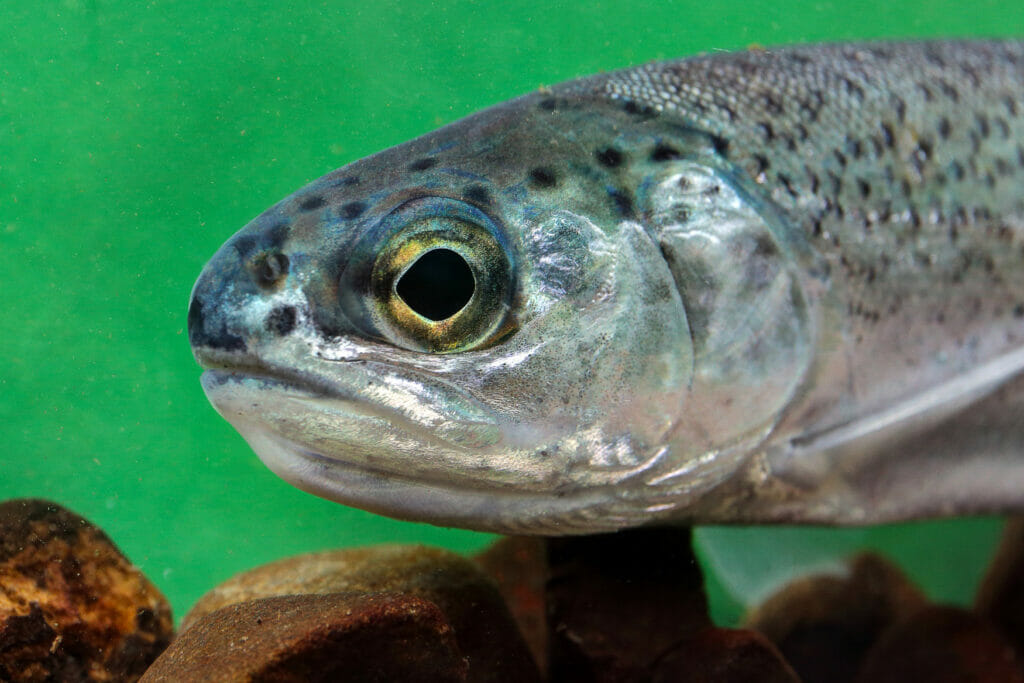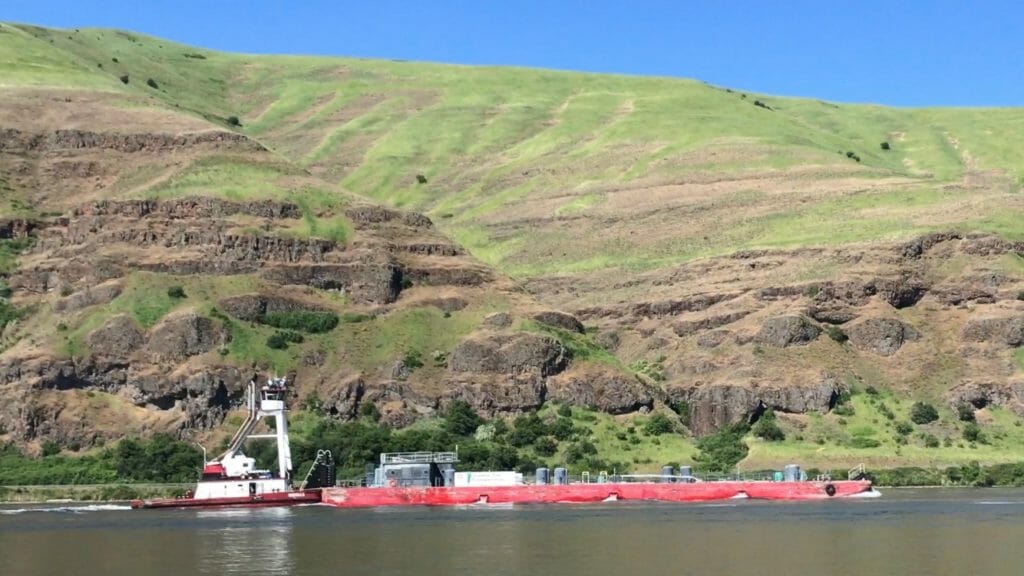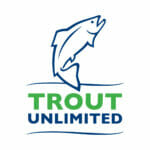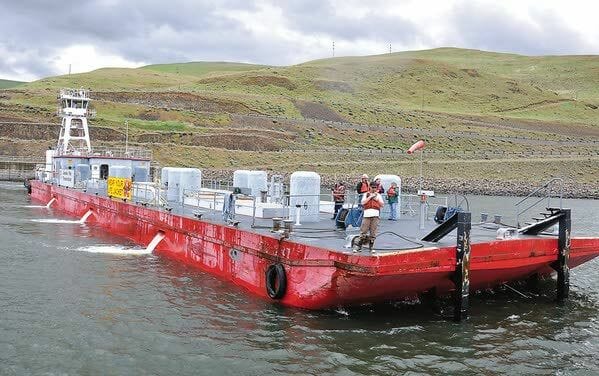There may be no more amazing feat in nature than migrations undertaken by salmon as they complete an epic journey from freshwater to the ocean and back upstream to their birthplace to spawn. In some cases, salmon swim more than 1,000 miles upstream to spawning waters.
In this final freshwater phase of their trip, adults follow an imprinted “map” of olfactory (smell) queues they drafted years before as juveniles. Remarkably, olfactory imprinting can begin even before the baby salmon leave their natal nest or redd.

As they grow, and eventually travel to the ocean, they continue to imprint on chemical queues emanating from the deep geology of their birthplace and the various tributaries that meet with their migratory path along the way. Their ability to decipher these queues is astonishing: even when mixed with 250 gallons of ocean water, a salmon can distinguish just one drop of water from its natal stream.
Given the incredible precision of this process, it is perhaps no surprise that disrupting this olfactory journey might compromise their ability to reconstruct their “smell map” when returning to freshwater as adults. One such disruption increasingly being recognized for its potential impact to this process is the practice of barging smolts downstream in an attempt to mitigate the effects of dams.
Efforts to bypass juveniles around dams, by loading them into barges (or hatchery trucks and truck trailers) and expediting their trip downstream, have been hypothesized to alter their ability to imprint. This, in turn, is thought to reduce the accuracy with which they later home to their natal waters — and increase straying into waters different from where they were born.
Why does this matter? Because different salmon populations have, over their evolutionary history, become locally adapted to their distinctive environments; they have honed complex physiological and behavioral strategies to “fit” where they are. Interbreeding with salmon from other areas, with different adaptations, can have serious negative effects on their overall productivity and future resiliency. Erosion of local adaptations can be especially acute when the strays are hatchery fish that are highly domesticated.

Emerging monitoring studies are confirming increased straying is a frequent outcome of barging.
A 2019 review of transport practices in the Central Valley of California showed straying rates of hatchery Chinook salmon correlated strongly with the distance they were transported as smolts.
Farther north, in the Columbia Basin, millions of outmigrating Snake River salmon and steelhead are barged each year in an effort to reduce the impacts of the Snake River dams. A paper by two biologists from the Oregon Department of Fish and Wildlife, just out in the journal Transactions of the American Fisheries Society, captures the negative impact of these barging practices by increased straying of hatchery adults into wild steelhead populations downstream.
The John Day Major Population Group of steelhead is managed as a wild population, with no hatchery releases in the watershed. Accordingly, NOAA has set a management goal of no more than 5 percent hatchery-origin spawners on the spawning grounds (measured as “PHOS” or Percent Hatchery Origin Spawners) in the John Day. To determine if these goals were being met, the recent monitoring study by Ian Tattam and James Ruzycki tracked PHOS from 2004-2018. Sadly, their monitoring uncovered surprisingly high PHOS in the earlier years of the study. They estimate from 2004-2007 PHOS in the John Day not only exceeded the 5 percent goal but was over 30 percent, reaching 42 percent in 2006.
To repeat the obvious, that means in 2006 an estimated 42 percent of the spawners in this “wild” population were hatchery fish. Statistical modeling indicated the number of steelhead smolts barged in the Snake River in the previous several years was a strong predictor of PHOS. Amazingly, the authors estimated a barged Snake River hatchery steelhead was 73 times more likely to have strayed into the John Day than a wild or hatchery fish that had out-migrated in the river.
Later in the study period, several management changes (delaying barging until later in the spring and increased flows over Lower Granite Dam) helped reduce the overall numbers barged as well as apparent impacts on imprinting, so that by 2017 a PHOS of zero percent was achieved. But despite this recent progress the authors emphasize in most of the 2000s, up-river barging management directly overrode Oregon’s efforts to manage PHOS in the John Day.
Assuming many of these strays successfully bred (as the data suggested), this history may have long-term effects on this wild population. A recent genetic study of archival samples of Chinook salmon shows after barging of Snake River Chinook was initiated, John Day Chinook salmon became increasingly genetically similar to Snake River populations, despite also being managed as a wild stock. The pattern was attributed to consistent straying of Snake River hatchery Chinook.
If similar patterns have occurred in steelhead, the genetic integrity of this wild population may have been compromised by barging management over a decade ago, threatening its future resiliency and productivity. This serves as yet another cautionary tale that our continued practice of seeking technical fixes for the impacts of our hydrosystems can often have unintended, and serious, downstream consequences.
Helen Neville is the Senior Scientist at Trout Unlimited. She is based out of Boise, Idaho.



